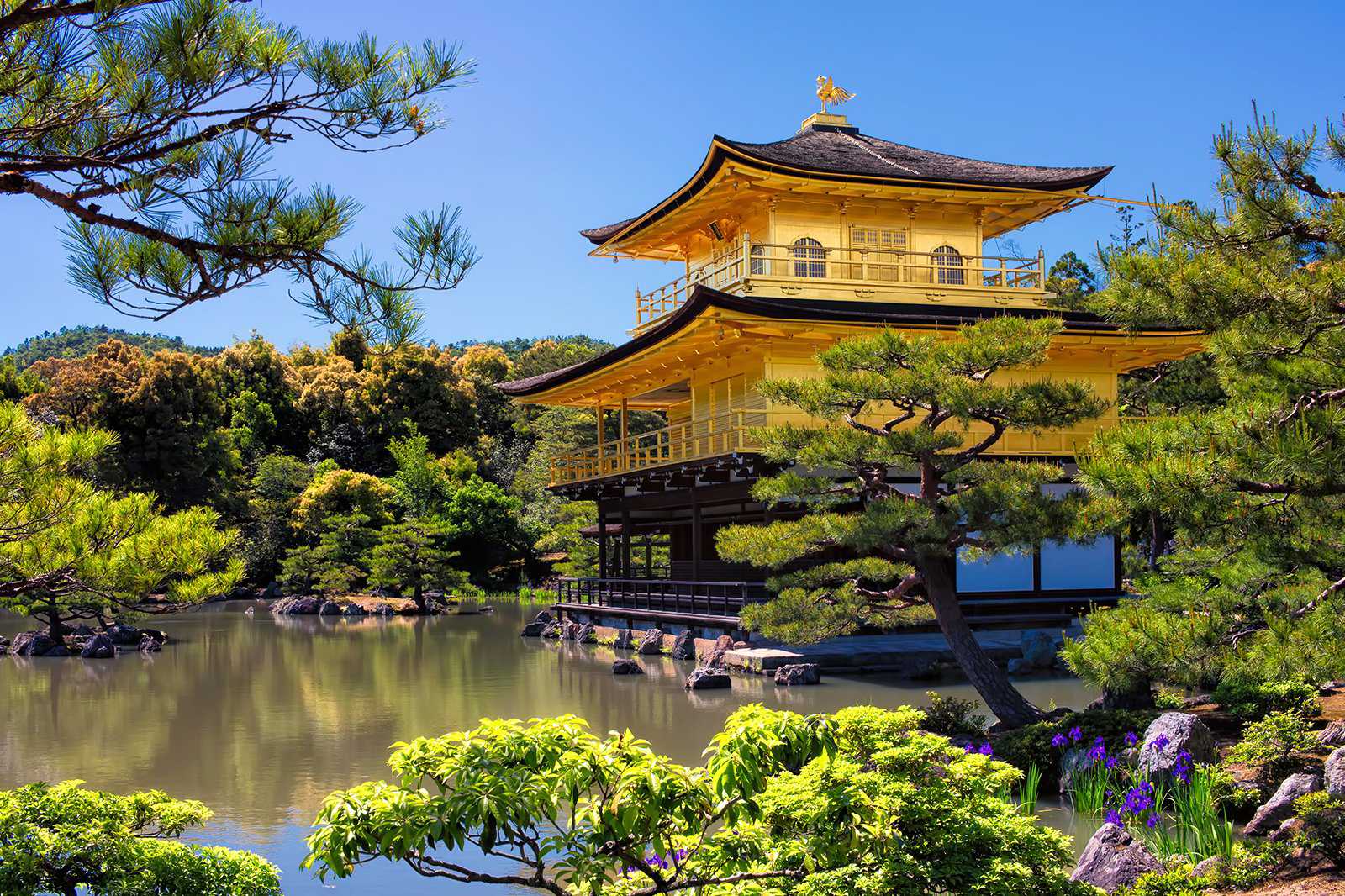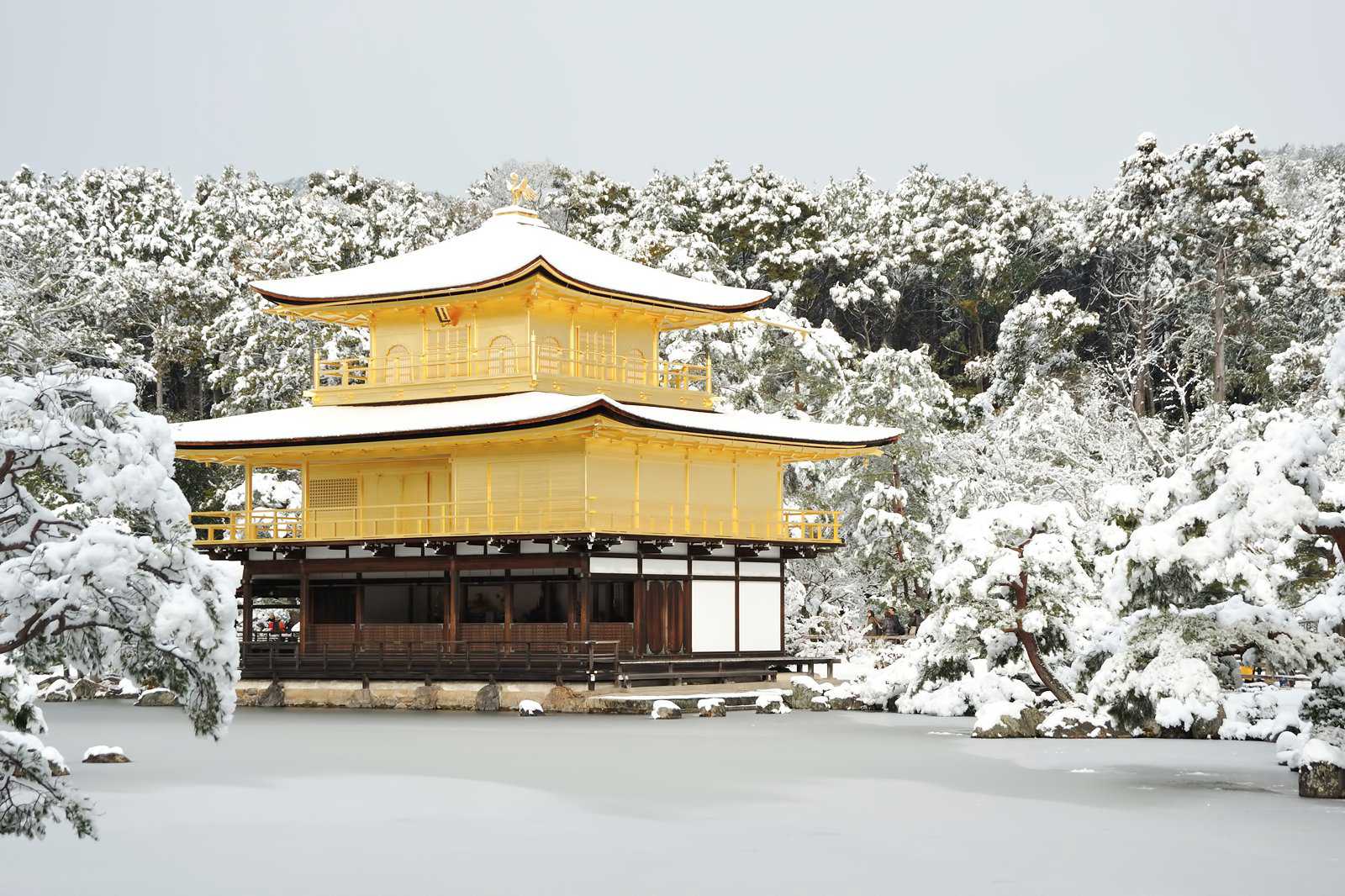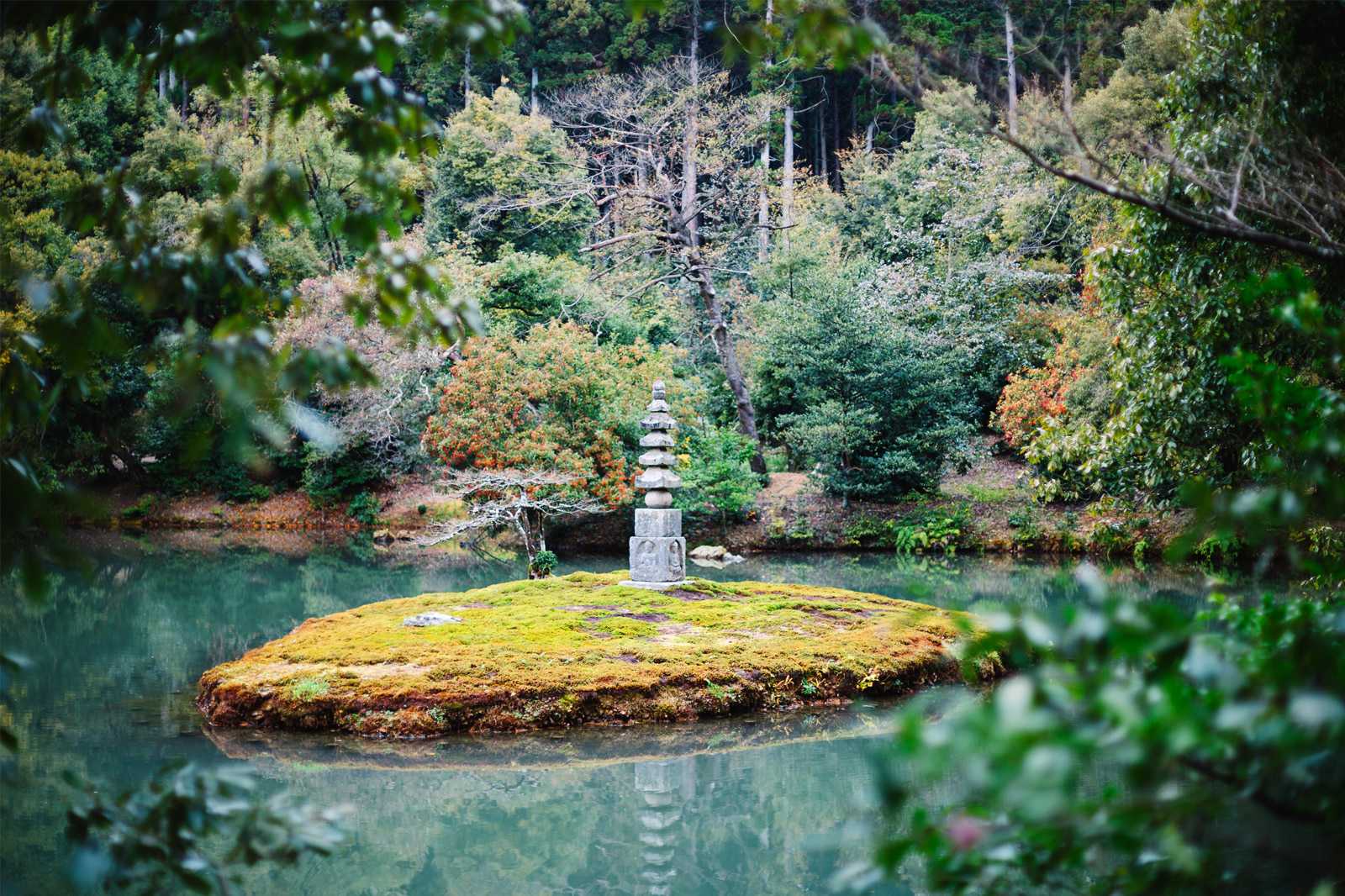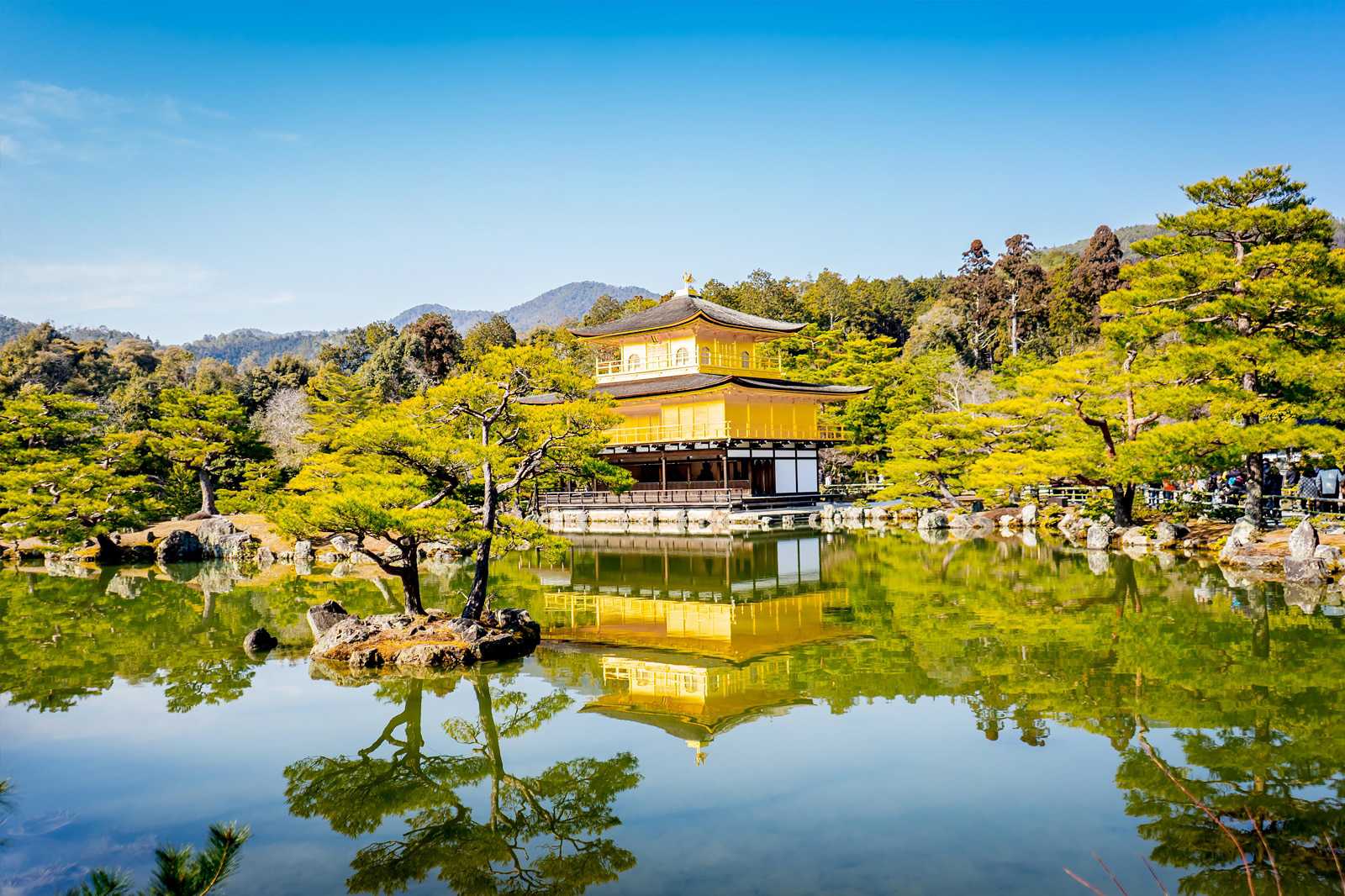Kinkakuji Temple is one of the most visited attractions of Kyoto. The temple’s name literally means ‘Temple of the Golden Pavilion.’ This astounding Zen Buddhist shrine is a UNESCO World Heritage Site.
The temple’s remarkable architectural styling, complemented with the awe-inspiring surroundings of an amazing lake and an authentic Japanese garden, easily make Kinkakuji Temple one of the must-visit places in Japan.
Kinkakuji Temple - one of the highlights of 11 Best Things to Do in Japan and 10 Places Where Locals Love to Go in Kyoto (Read all about Kyoto here)

photo de Ray in Manila (CC BY 2.0) modifiée
History of Kinkakuji Temple
Located in the serene area of Kinkakuji-cho in the north-east of Kyoto, Kinkakuji Temple was originally built as Kitayama-dai in 1393 by Saionji Kintsune – a powerful aristocrat of the time. In 1397, it was taken over by Ashikaga Yoshimitsu – the Muromachi Government’s third shogun – who renamed it Kitayamadono and made it his retirement villa. After the death of Yoshimitsu, his son converted the villa into a Zen shrine, as per the will of his father. It was then known as Rokuonji Temple. The temple was badly destroyed during the Onin War in the 15th century.
Even though it was restored, the shrine was again destroyed by a young fanatic monk, Hayashi Yoken, in 1950. He was sentenced for 7 years in prison but released in 1955 when he was found to be schizophrenic. After a year, the monk passed away as a result of tuberculosis. A fictionalized version of this event was mentioned in the book, The Temple of the Golden Pavilion, penned by Yukio Mishima.
The present temple was erected in 1955 and is the exact replica of the original one, with the exception that the upper stories are coated with gold leaf, according to the wishes of Yoshimitsu Ashikaga. Again in 1987, the golden coating was made thicker, in addition to enhancing the interiors as well as restoring the statue of Yoshimitsu.

photo de Takeshi Kuboki (CC BY 2.0) modifiée
Highlights and Features of Kinkakuji Temple
Towering 12.5 metres tall, Kinkakuji temple complex’s major draw is the Golden Pavilion that stands quaintly at the edge of the mesmerizing lotus-filled Mirror Lake. Its layout represents the Heian period’s typical Shinden style and the locale implies a spot that is between heaven and earth. The wooden Golden Pavilion consists of 3 storeys, of which the upper 2 are completely coated with gleaming gold leaf. Each has its own specialities and comes with a unique architectural style.
Constructed in a traditional Japanese palace style design, the first storey – referred to as Hôsuiin or the Chamber of Dharma waters – is complete with an expansive room and a veranda. This area was used as a reception hall when the Shogun resided here. On the second storey is Chôondô or the Hall of Roaring Waves that has been erected in the Buke-zukuri style. It was primarily used to hold important meetings with dignitaries and now enshrines an image of Kannon.

The third storey, Kukkyôchô, has a firmament top and round-headed windows. It is richly decorated and takes after the architecture style of Chinese Zen shrines. The Shogun used it as the venue to conduct tea ceremonies as well as informal meetings. Presently, it contains an Amida triad, along with 25 Bodhisattvas. Above all, there is a golden statue of a Chinese phoenix atop the roof.
Equally worth mentioning is the astounding surroundings of the temple. One of the dramatic sights of the temple complex is the reflection of the shimmering Golden Pavilion in the calm waters. During your visit to the temple, be sure to take a walk along its mind-blowing grounds, complete with a spectacular Japanese style garden, waterfalls, natural springs, and stones depicting Buddhism. A temple dedicated to Fudo Myo-o – the Lord of Fire and Wisdom – is also within the temple grounds.
Kinkakuji Temple is easily accessible from Kyoto Station via Kyoto City Bus numbers: 101 and 205. You can also opt for the Karasuma subway line or a taxi to reach the temple.

Kinkakuji Temple
Emplacement : 1 Kinkakujicho, Kita-ku, Kyoto-shi, Kyoto-fu 603-8361, Japan
Ouverture : Daily from 9am to 5pm
Téléphone : +81 75-461-0013



















